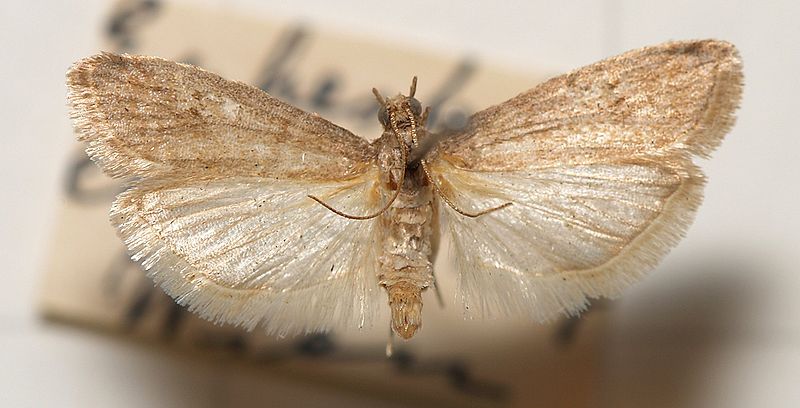Tobacco Moth
Description:
 The Tobacco Moth is an introduced pest species of moth. Often found in warehouses and other areas where food or tobacco is stored. Commonly known as either Tobacco moth, Cocoa Moth or Warehouse moth, are a widely distributed pest moth of stored products. They are considered a primary pest of stored products and can infest many products including tobacco, grains, pulses, processed flours and dried fruits The number of generations varies with climate as they can have as few as one generation a year in colder areas up to constant breeding in ideal conditions.
The Tobacco Moth is an introduced pest species of moth. Often found in warehouses and other areas where food or tobacco is stored. Commonly known as either Tobacco moth, Cocoa Moth or Warehouse moth, are a widely distributed pest moth of stored products. They are considered a primary pest of stored products and can infest many products including tobacco, grains, pulses, processed flours and dried fruits The number of generations varies with climate as they can have as few as one generation a year in colder areas up to constant breeding in ideal conditions.
Photo attribution link: By Sarefo (Own work) [GFDL (http://www.gnu.org/copyleft/fdl.html) or CC BY-SA 3.0 (http://creativecommons.org/licenses/by-sa/3.0)], via Wikimedia Commons
Appearance:
The moth has a wing expanse of 14-17 mm; when at rest, the wings folded to a roof over the body, it is 8-11 mm long. The adult moth has brownish grey forewings crossed with two light bands. The hindwings are paler and plain grey. The caterpillars are whitish, yellowish or reddish (depending on nutrition) with brown head and neck shields. They grow to a length of 10-15 mm.
Lifecycle:
The female deposits about 100 eggs, singly or in small clusters. The caterpillars cover the infested goods with webbing. Pupation occurs in a cocoon. The development period depends on warmth and nutrition. Depending on the season, complete development takes 2-6 months.
Habits:
The Tobacco Moth feeds on cocoa beans and tobacco, but also infests nuts, dried fruit and cereals. Adult moths do not feed. The larval feeding cause the most damage due to contamination with excrement and cocoons is immense. Besides tobacco, the pest infests cocoa, nuts, dried fruits, coffee, corn maize, wheat and spice.